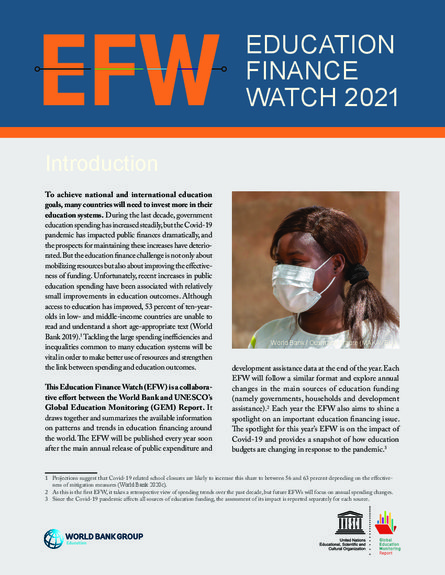
Education budgets are not adjusting proportionately to the challenges brought about by COVID-19, especially in poorer countries. Despite additional funding needs, two-thirds of low- and lower-middle-income countries have, in fact, cut their public education budgets since the onset of the pandemic, according to the new joint World Bank – UNESCO report, Education Finance Watch (EFW).
In comparison, EFW demonstrates only one-third of upper-middle and high-income countries have reduced their budgets. These cuts have been relatively small so far, but there is a danger that they will grow as the pandemic continues to take its economic toll, and fiscal positions worsen. These differing trends imply a significant widening of already large spending disparities seen between low- and high-income countries.
According to the new report, prior to the COVID-19 pandemic, in 2018-19, high-income countries were spending annually the equivalent of $8,501 for every child or youth’s education compared to $48 in low-income countries. COVID-19 is widening this huge per-capita education spending gap between rich and poor countries even further.
EFW stresses that the education finance challenge is not only about mobilizing resources, but also about improving the effectiveness of funding. Unfortunately, recent increases in public education spending have been associated with relatively small improvements in education outcomes. Although access to education has improved, the learning poverty rate – the proportion of 10-year-olds unable to read a short, age-appropriate text – was 53 percent in low- and middle-income countries prior to COVID-19, compared to only 9 percent for high-income countries. COVID-19 related school closures are likely to increase this 53 percent share to as much as 63 percent.